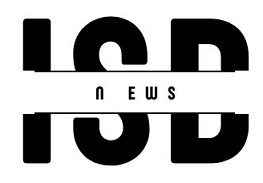This is the first publication of the Market’s Compass Developed Markets ETF Study to be published in our Substack Blog that will highlight the technical changes of the 22 DM ETFs that we track on a weekly basis. Past publications can be accessed via The Market’s Compass website or by contacting us directly.
This Week’s and 8 Week Trailing Technical Rankings of Individual ETFs
The Excel spreadsheet below indicates the weekly change in the Technical Ranking (“TR”) of each individual ETF. The technical ranking or scoring system is an entirely quantitative approach that utilizes multiple technical considerations that include but are not limited to trend, momentum, measurements of accumulation/distribution and relative strength. If an individual ETFs technical condition improves the “TR” rises and conversely if the technical condition continues to deteriorate the “TR” falls. The “TR” of each individual ETF ranges from 0 to 50. The primary take away from this spread sheet should be the trend of the individual “TRs” either the continued improvement or deterioration, as well as a change in direction. Secondarily a very low ranking can signal an oversold condition and conversely a continued very high number can be viewed as an overbought condition but with due warning over sold conditions can continue at apace and overbought securities that have exhibited extraordinary momentum can easily become more overbought. A sustained trend change needs to unfold in the “TR” for it to be actionable.

As can be seen above, For the past three weeks the iShares MSCI United Kingdom Index Fund ETF (EWU) has registered an improving “TR”, 35 ,43.5, 45.5 respectively and last week’s reading marked the best “TR” out of the 22 Developed Markets ETFs we track. In addition, the EWU registered a 3 ½ year intra-week price high before pulling back in the latter part of the week. The lower panel of the chart (presented below) is MACD of the “TR”. Since the start of the year MACD has continued to track higher above its signal line in positive territory, reflecting the positive momentum in the “TR”.

The iShares MSCI World ETF URTH with This Week’s Total ETF Ranking “TER” Overlayed
The Total ETF Ranking (“TER”) Indicator is a total of all 22 ETF rankings and can be looked at as a confirmation/divergence indicator as well as an overbought oversold indicator. As a confirmation/divergence tool: If the broader market as measured by the iShares MSCI World ETF (URTH) continues to rally without a commensurate move or higher move in the “TER” the continued rally in the URTH Index becomes increasingly in jeopardy. Conversely, if the URTH continues to print lower lows and there is little change or a building improvement in the “TER” a positive divergence is registered. This is, in a fashion, is like a traditional A/D Line. As an overbought/oversold indicator: The closer the “TER” gets to the 1100 level (all 22 ETFs having a “TR” of 50) “things can’t get much better technically” and a growing number individual ETFs have become “stretched” the more of a chance of a pullback in the URTH. On the flip side the closer to an extreme low “things can’t get much worse technically” and a growing number of ETFs are “washed out technically” an oversold rally or measurable low is close to be in place. The 13-week exponential moving average in Red smooths the volatile “TR” readings and analytically is a better indicator of trend.

Although it can barely be seen in the chart above, the “TER” fell from the week before (437.5 to 435.5). The move was de minimus leaving the 13-week moving average in its sharp down trend with nary a hint of a turn as it rapidly approaches an oversold condition as the “TER” continues in the series of lower highs and lower lows.
The Average “TR” Ranking of the 22 ETFs
The Average Weekly Technical Ranking (“ATR”) is the average technical ranking of the 22 Developed Markets ETFs we track weekly and is plotted in the lower panel on the Weekly Candle Chart of the iShares MSCI World Index (URTH) presented below. Like the “TER”, it is a confirmation/divergence or overbought/oversold indicator.

The “ATR” of the 22 Developed Markets ETFs scarcely moved last week but the trend, as can be seen by both the shorter-term and longer-term moving averages remains lower. That said the “ATR” has not reached an oversold extreme that we witnessed in December 2018 or March 2020.
The Week Over Week Change in Individual ETF Technical Rankings

The iShares MSCI Hong Kong Index Fund ETF (EWH) registered the best gain in “TR” over the week (rising 10 to 37 from 27), followed by the iShares MSCI Australia Index Fund ETF (EWA). Aside from a brief drawdown at the turn of the month the EWH “TR” has risen steadily from mid December. The EWA (rising 8 from 5.5 to 13.5) benefited from the improvement in Mining and Banking holdings in the ETF (see the top fifteen holdings in both ETFs below). Data is courtesy of Bloomberg
EWH Holdings

EWA Holdings

The Developed Markets ETFs Weekly Absolute and Relative Price % Change*

*Does not including dividends
Seven of the 22 Developed Markets ETFs we track improved on an absolute basis last week led by the iShares MSCI Singapore Index Fund ETF (EWS), up +2.70%, followed by the iShares Australia Index Fund ETF (EWA), up +2.38% and the iShares MSCI Canada Index Fund ETF (EWC) which rose +1.17%. Thirteen DM ETFs outperformed the iShares MSCI World ETF (URTH) on a relative basis and 9 underperformed.
The Relative Return Vs. the URTH Index Year to Date*

*Does not including dividends
I invite our readers to contact me with any questions or comments at…[email protected]














